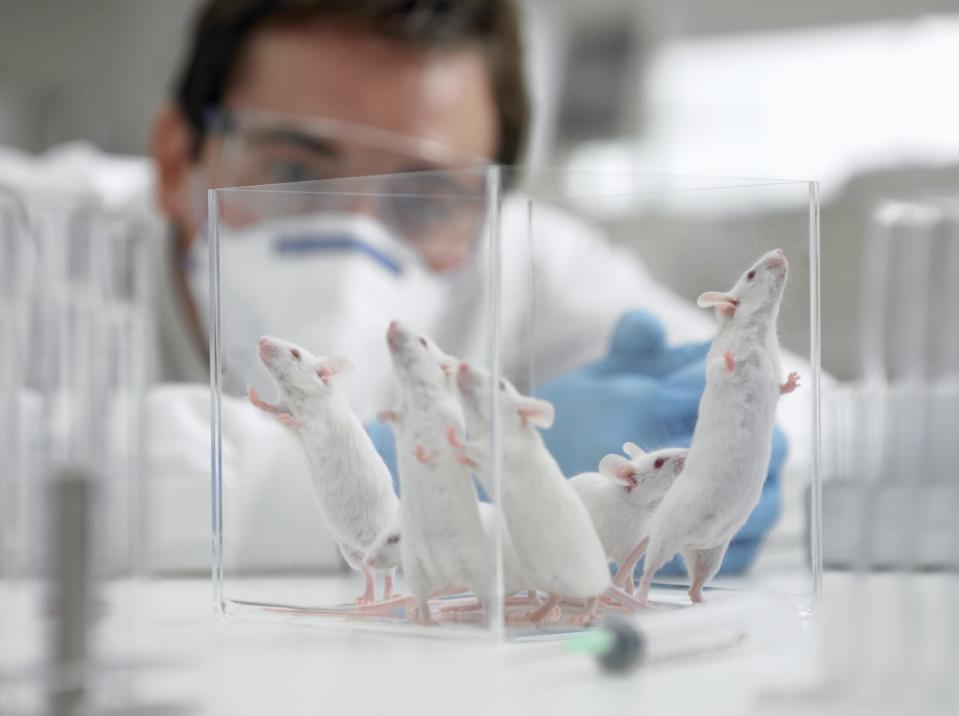Brain implants help nervous mice find their competitive side
It could have interesting implications for humans with severe social anxiety.
Social competition and establishing dominance are a part of the culture of many species, from humans to mice. That's why the results of a recent study published in Science are so interesting. A team of Chinese scientists changed the behavior of mice to turn "loser" mice into "winners."
The experiment used a standard practice called a dominance tube test. Two mice are placed at either ends of an open tube; the tube is only wide enough to accommodate a single mouse. Because they cannot move around one another, once the two mice meet, they must compete in order to determine which moves forward and which moves backward. The mouse that is able to press forward is the "winner" mouse.
The team discovered that the winning mice had higher brain activity in the dorsomedia prefrontal cortex (dmPFC), which has historically been associated with social dominance. They theorized that winning, and what they call the "winning effect," is just as important to a mouse's results as personality traits and mental strength. The researchers then used a technique called "optogenics," which consisted of a fiber optic implant and using photostimulation, or light, to enhance the "loser" mouse's dmPFC. It changed the subordinate mice's behavior: "Under photostimulation, the originally subordinate mice not only resisted pushes from the opponents for a longer duration, but also pushed more."
While it's easy to have a knee-jerk reaction to this study -- we really do not need artifically aggressive creatures, whether humans or mice -- it's important to note that the photostimulation didn't change a mouse's physical prowess, nor did it affect testosterone levels. It's the number of wins that most affected the future "winner" status of the mice; the more they won, the more likely they were to win upcoming encounters, well after photostimulation was over. The team was also able to show that the winning behavior transferred to other activities.
The results of this study are fascinating for many reasons, but specifically because mouse brains and human brains are very similar (though, clearly human brains are much more complicated). The last thing we need right now is overly aggressive photostimulated humans running around, but the implications for people with social anxiety are much more interesting. Could research like this pave the way for giving people with crippling anxiety a little help and confidence in social situations? It's certainly possible. While we should be wary of running straight to "brain implant" to solve our ills, this research opens up interesting potential for future study.



